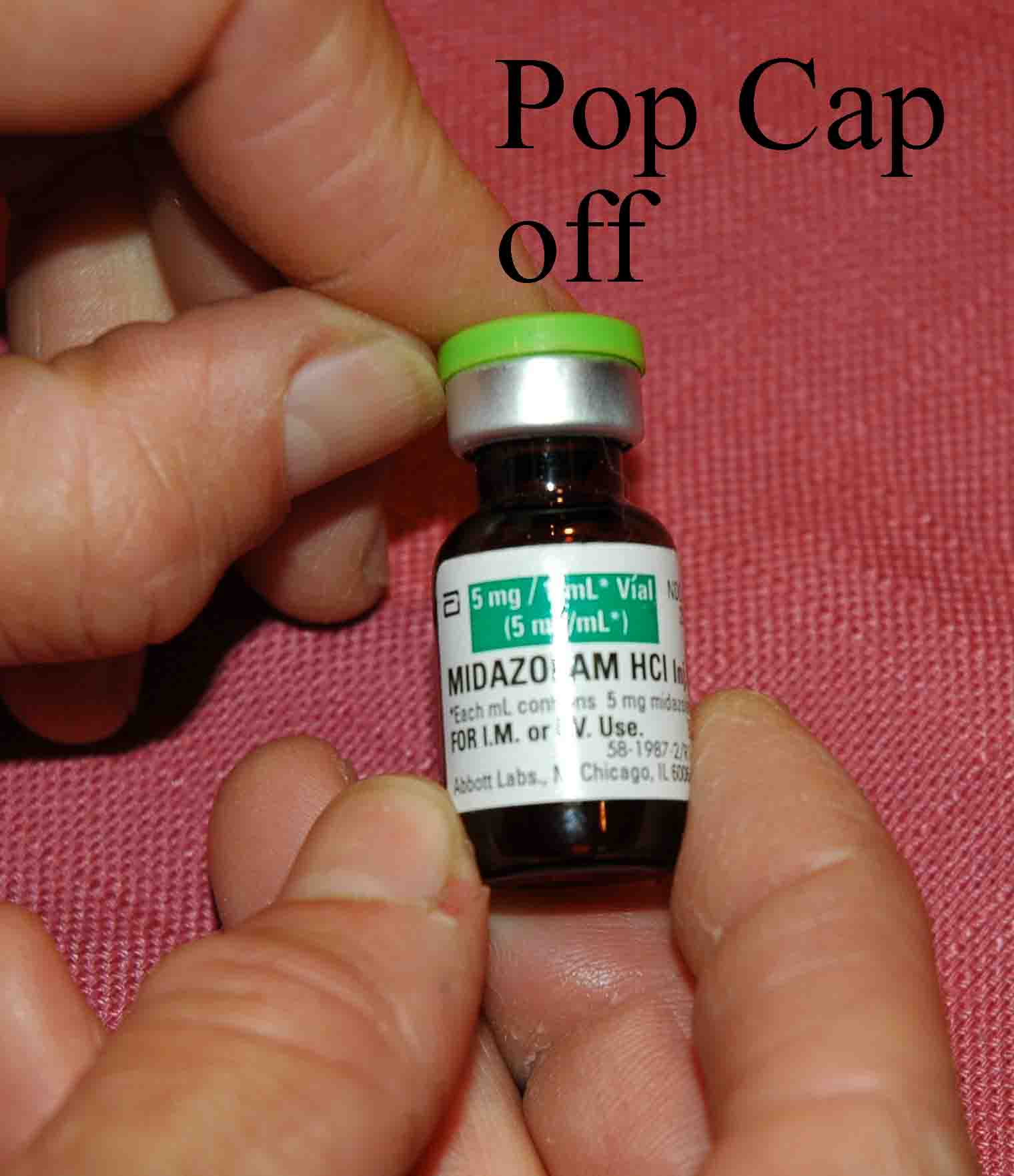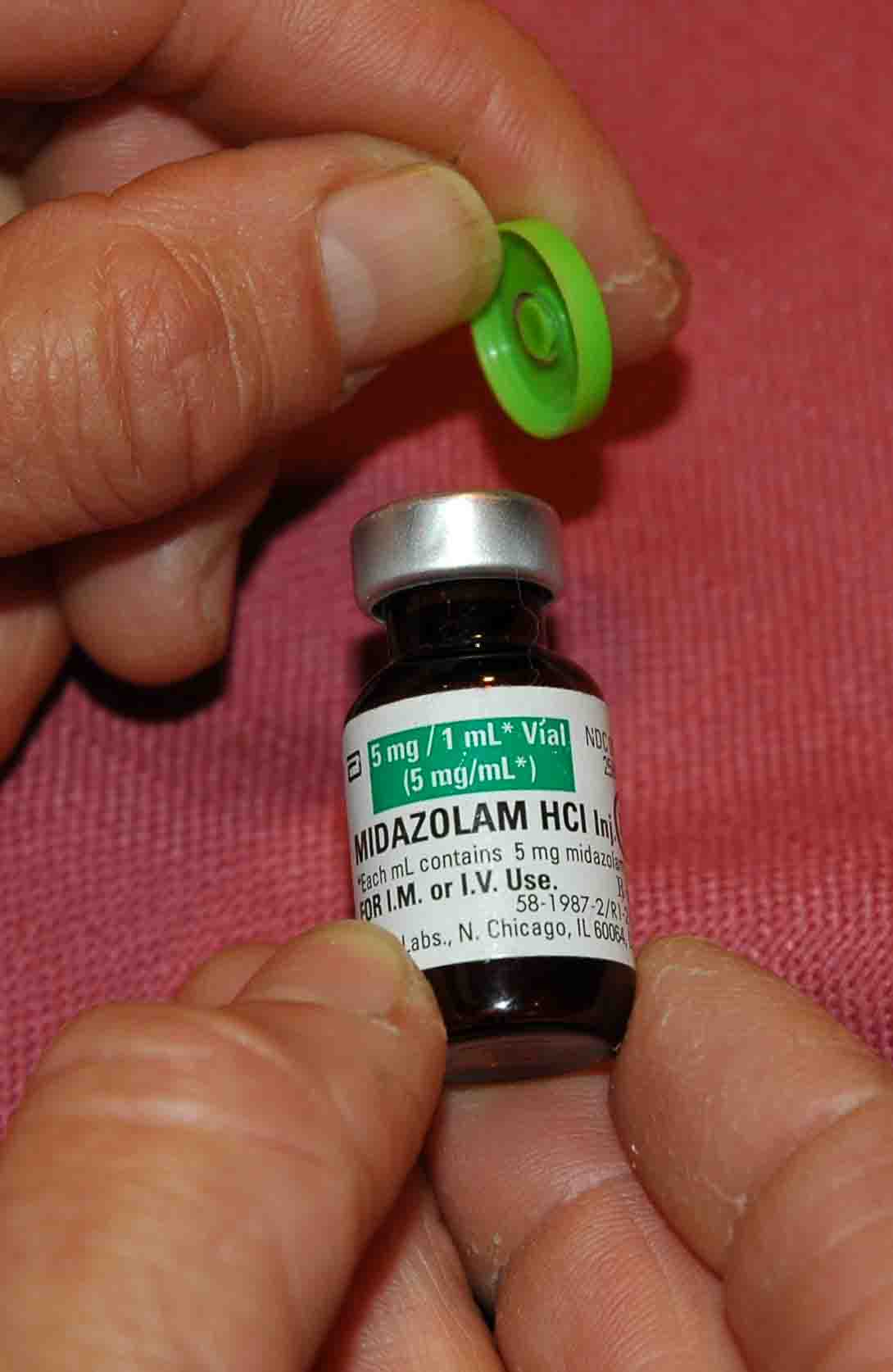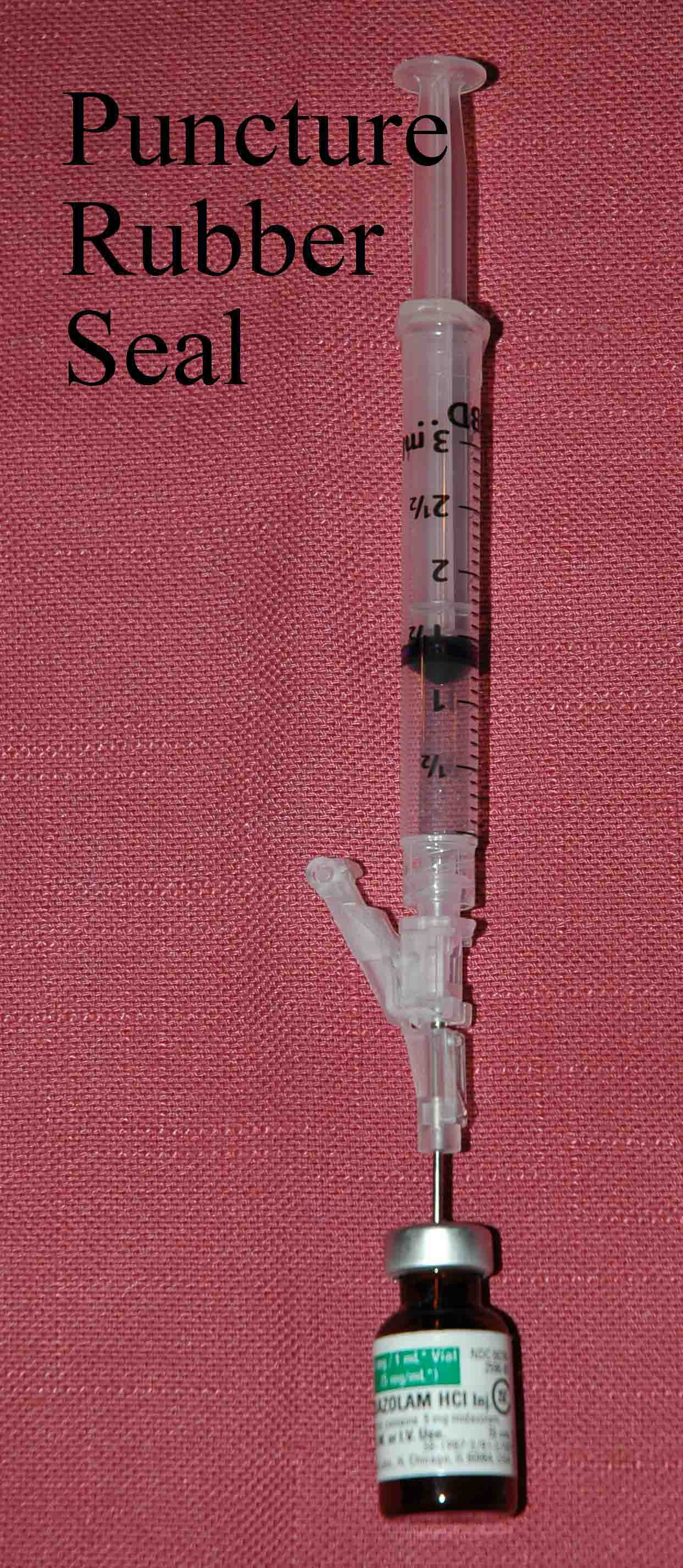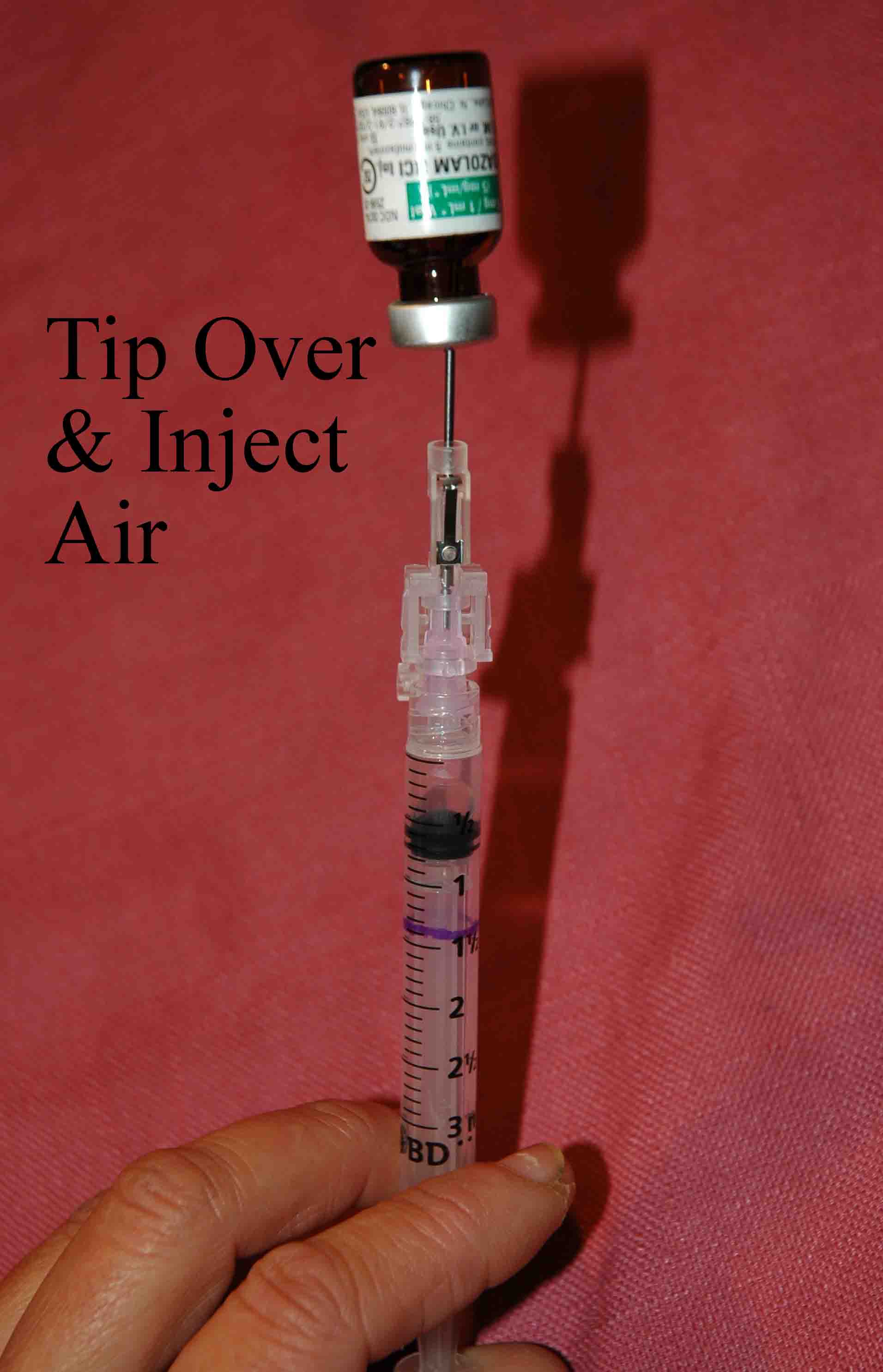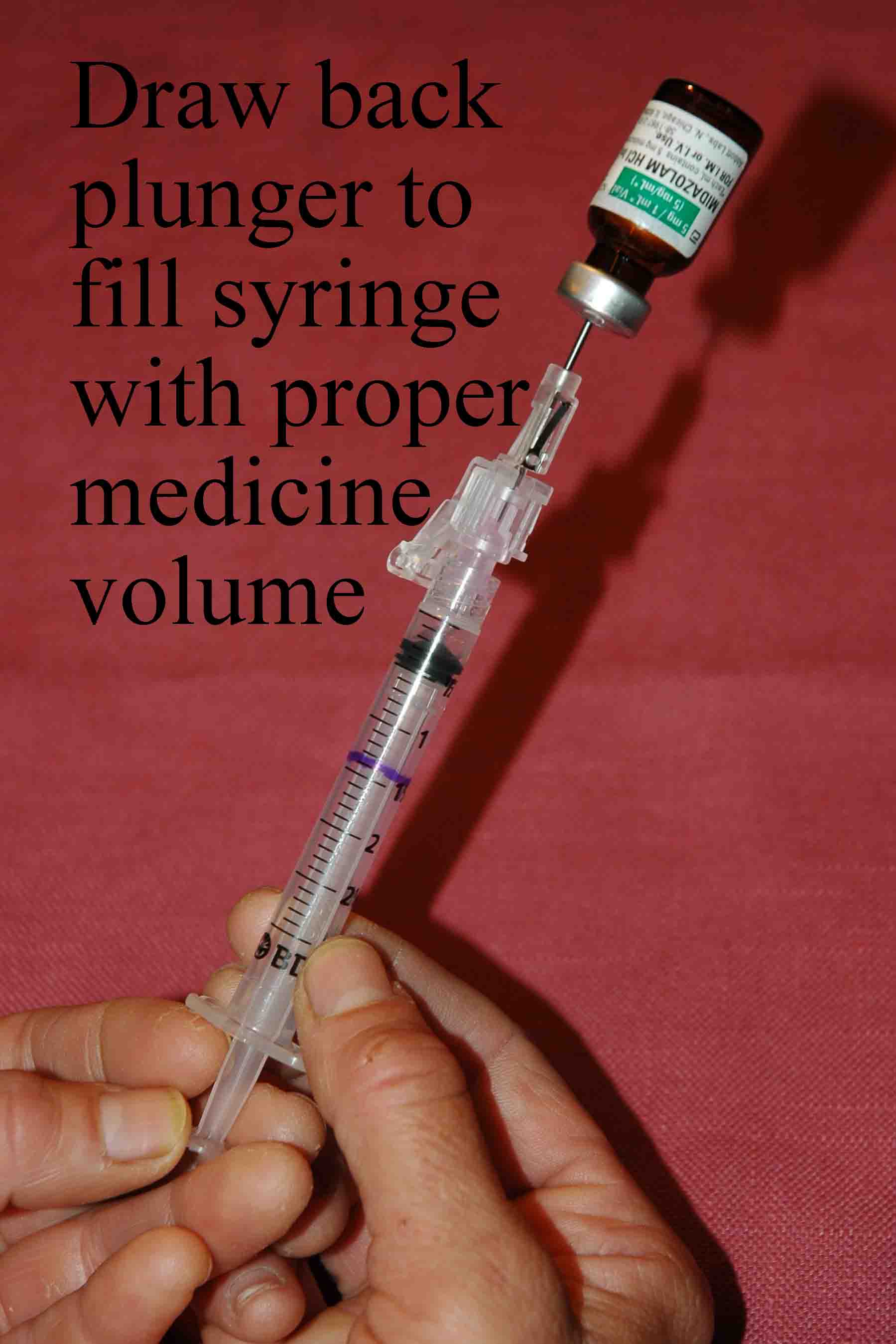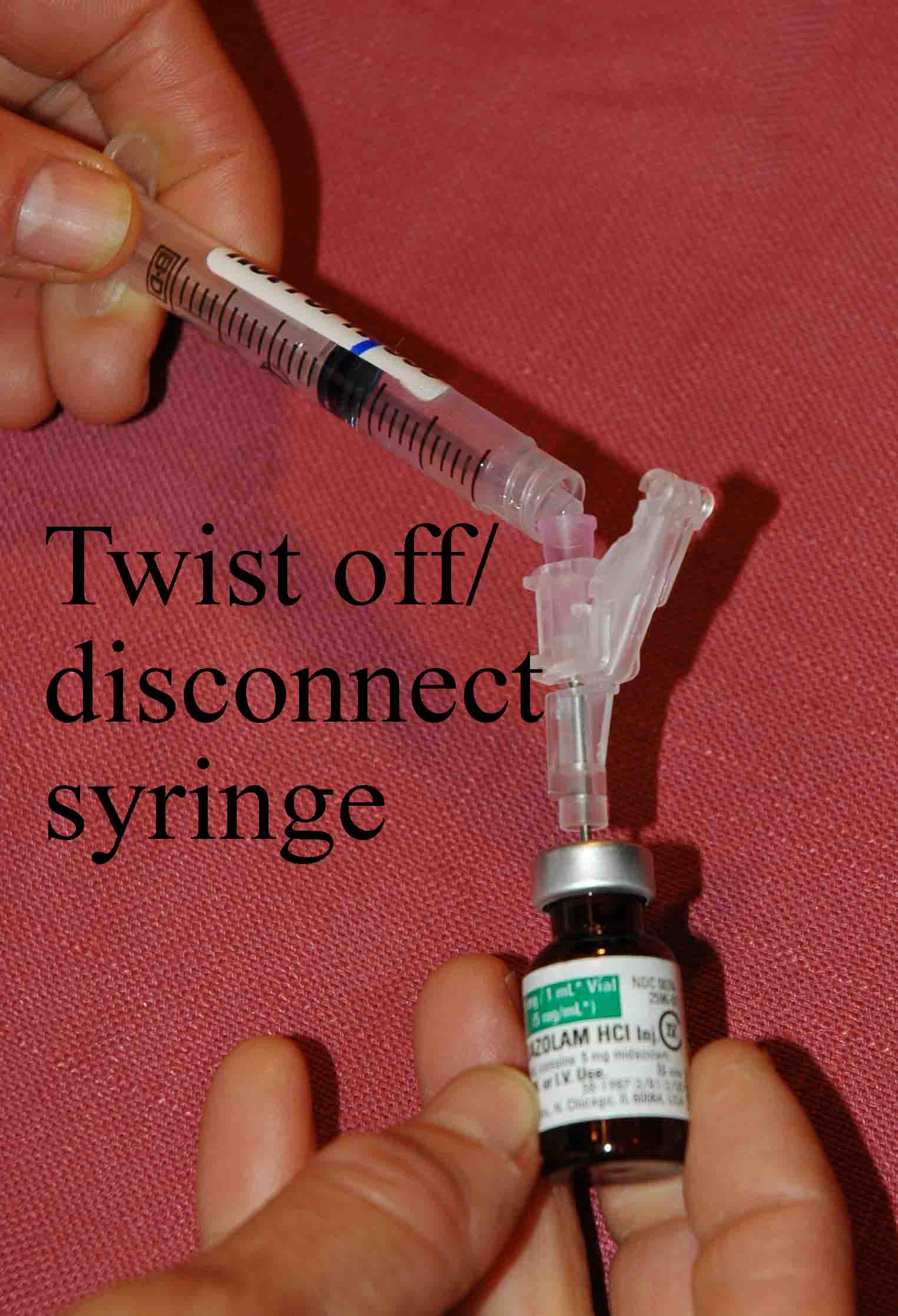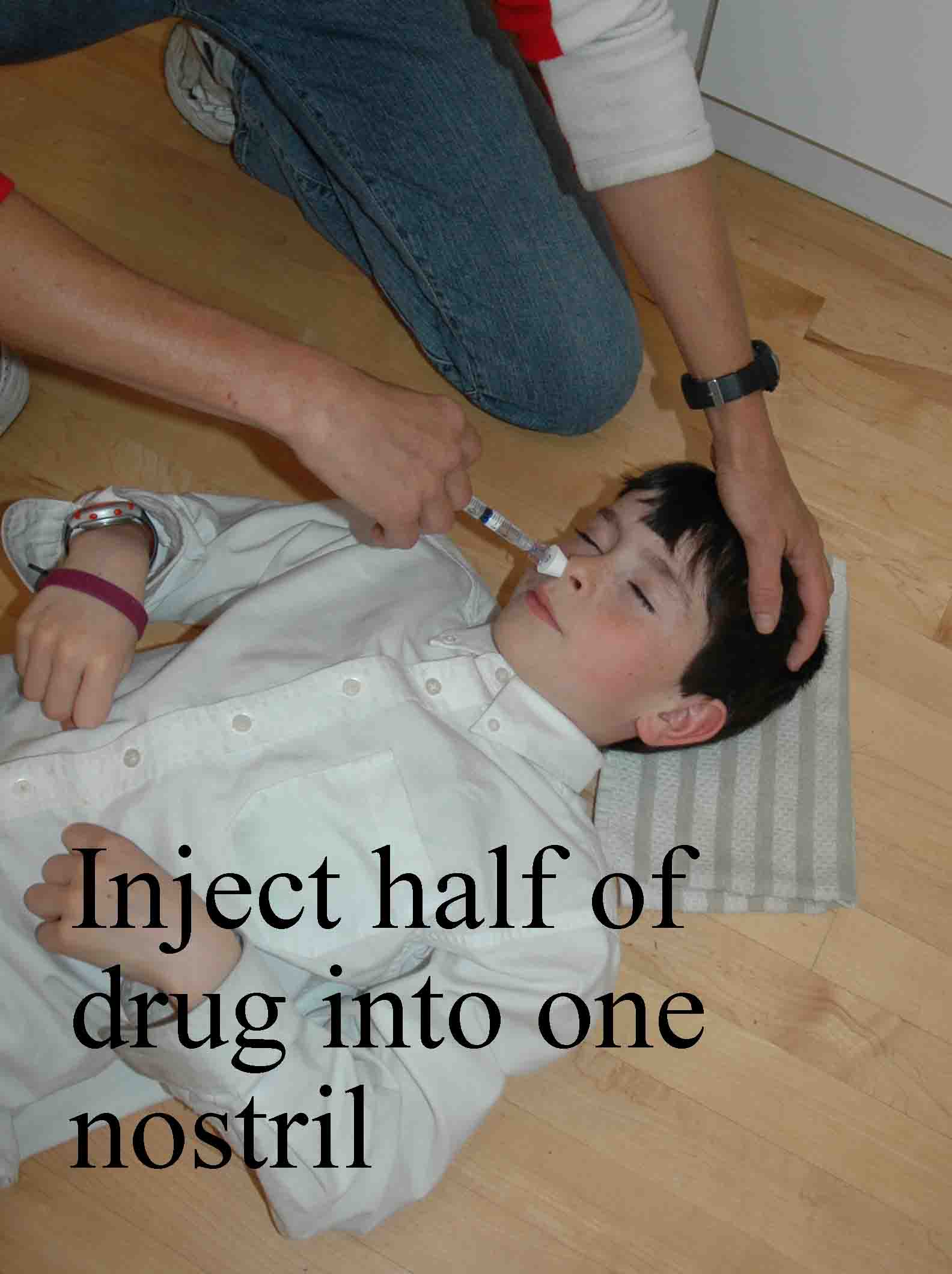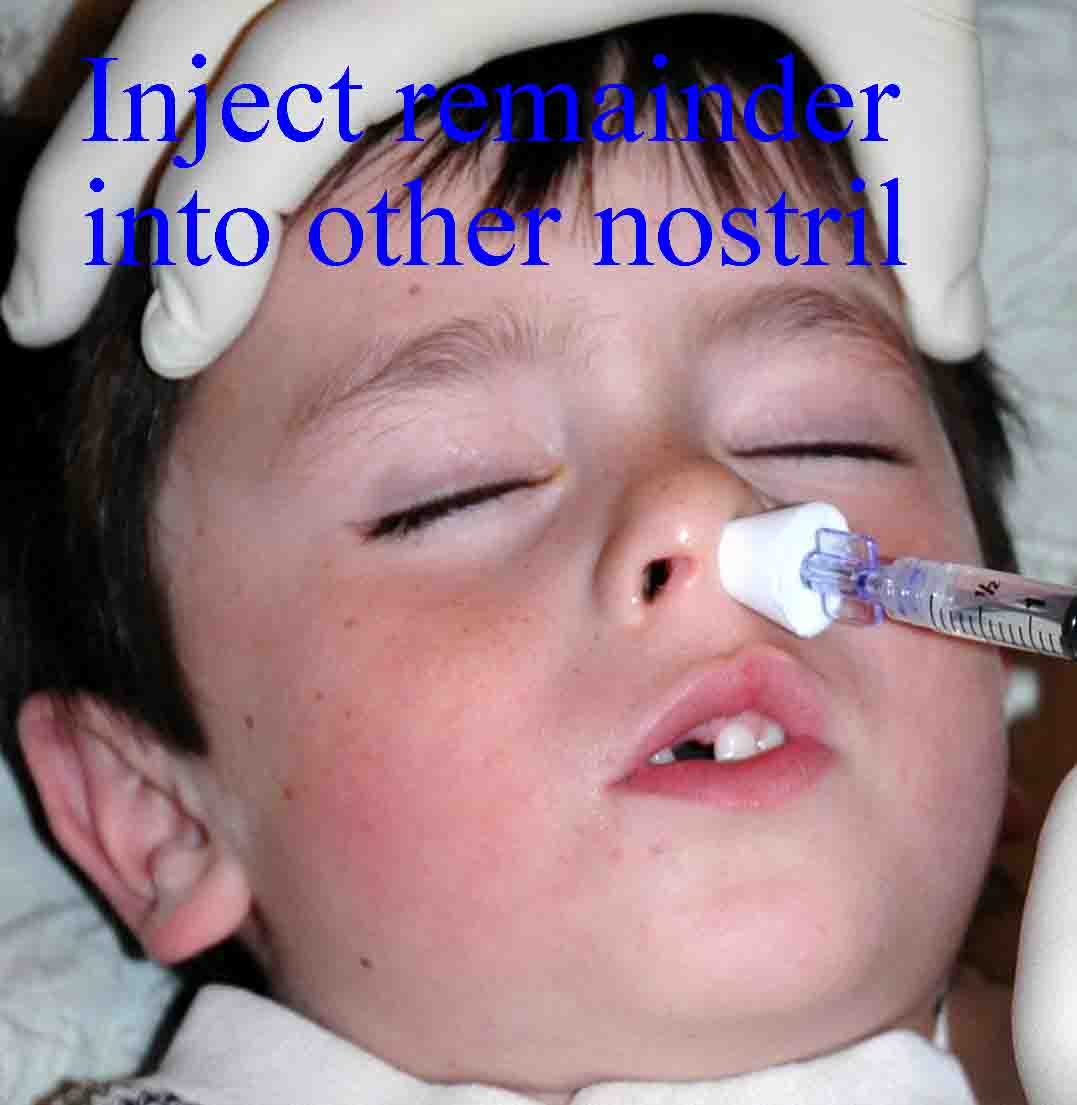Home Therapy for seizures using intranasal midazolam:
Indications - To deliver topical seizure medications to the nasal mucosa for the treatment of status epilepticus
NOTE: You can now have your doctor prescribe midazolam in prefilled syringes. All you will need to do at that point is connect the atomizer and deliver the correct dose for your child
Prefilled syringes of medication:
Based on extensive research and community use, prepackaged midazolam in the 5mg/ml dosing would certainly seem appropriate for use by properly trained families and BLS providers - and this packaging would surely help improve the ease of use. See this PDF file for the information on other prepackaged medications: Carpuject medications In situations where the entire volume might not be appropriate (smaller child), the syringe can have a indelible mark or piece of tape applied by the clinician or pharmacy at the appropriate dosage so the parent/provider knows how much to give. Just be sure to purchase the proper dosing (concentrated).
Carpuject of midazolam (has a Luer attachment for a needle or atomizer)
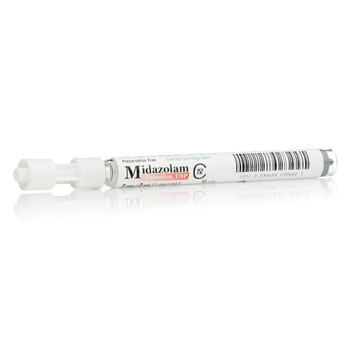
Preparation and practice before any seizure:
Always store the syringe(s), needle or needleless vial adapter, atomizer tip(s) and medication bottle together in the same place where you can easily access them.
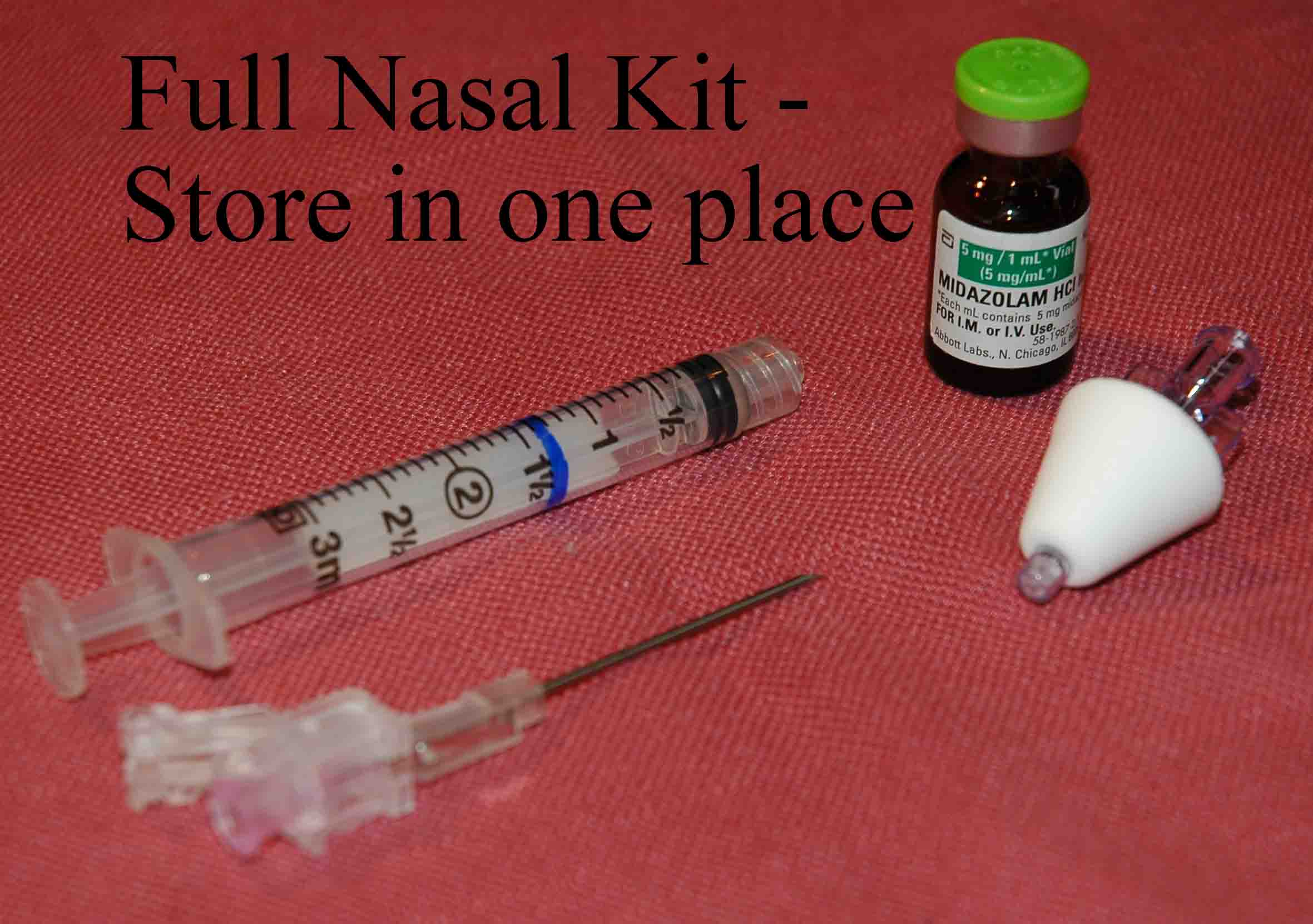
Before you ever
need to use the medication, be sure you are knowledgeable regarding the
amount (volume) of medication you will administer to the seizing person.
That way when the time comes and you are anxious, you will not make a
mistake in administering the correct dose.
o
It is a very
good idea to take the syringe(s) and have the doctor or nurse use a
permanent marker to draw a line around the barrel of the syringe
indicating the TOTAL volume of drug you will need to treat the patient.
o
Be sure they
account for the 0.1 ml of medication that will remain within the syringe
and atomizer tip at the end of the procedure (dead space).
§
For example, if
you need to administer 1.2 ml of medication to the patient, you will
need 1.3 ml in the syringe at the start of the procedure.
o
Use a syringe
and some water (in place of the medication) and follow the procedural
directions for a practice trial so you are comfortable when the time
arrives.
Unless seizures occur on a weekly basis, do not store the medication pre-drawn up in a plastic syringe – this may lead to the active medication leaching out of the fluid into the plastic and result in inadequate medication effect on the patient. You should draw the medication up at the time it is needed.
Midazolam Dosing chart
|
* This volume is based on the calculated dose PLUS 0.1 ml dead space in the device (the amount of medication that will remain within the syringe and atomizer tip and therefore will not be delivered to the child). The total volume is then rounded off to the next highest 0.1 ml. Slightly higher doses may be appropriate at the lower range of volume (in smaller children) due to measurement difficulties and possible under dosing which may not stop the seizure.
In some children a higher dose (0.3 mg/kg) may be more appropriate
To calculate your child’s weight in kg, divide their weight in pounds by 2.2.
-
For example, a child who weights 65 pounds: 65 pounds divided by 2.2 = 29.5 kg (or essentially 30 kg for dosing calculations).
-
Using this chart, the child should be given 1.4 ml of medication (a small amount of which will remain in the device).
Procedure:
-
Pull the
plunger of the syringe back until the black seal is at the mark on
your syringe.
-
For
example if you are supposed to draw up 1.0 ml of medication,
pull the plunger back to the 1 ml mark of the syringe - the
syringe will now have 1 ml of air within it.
-
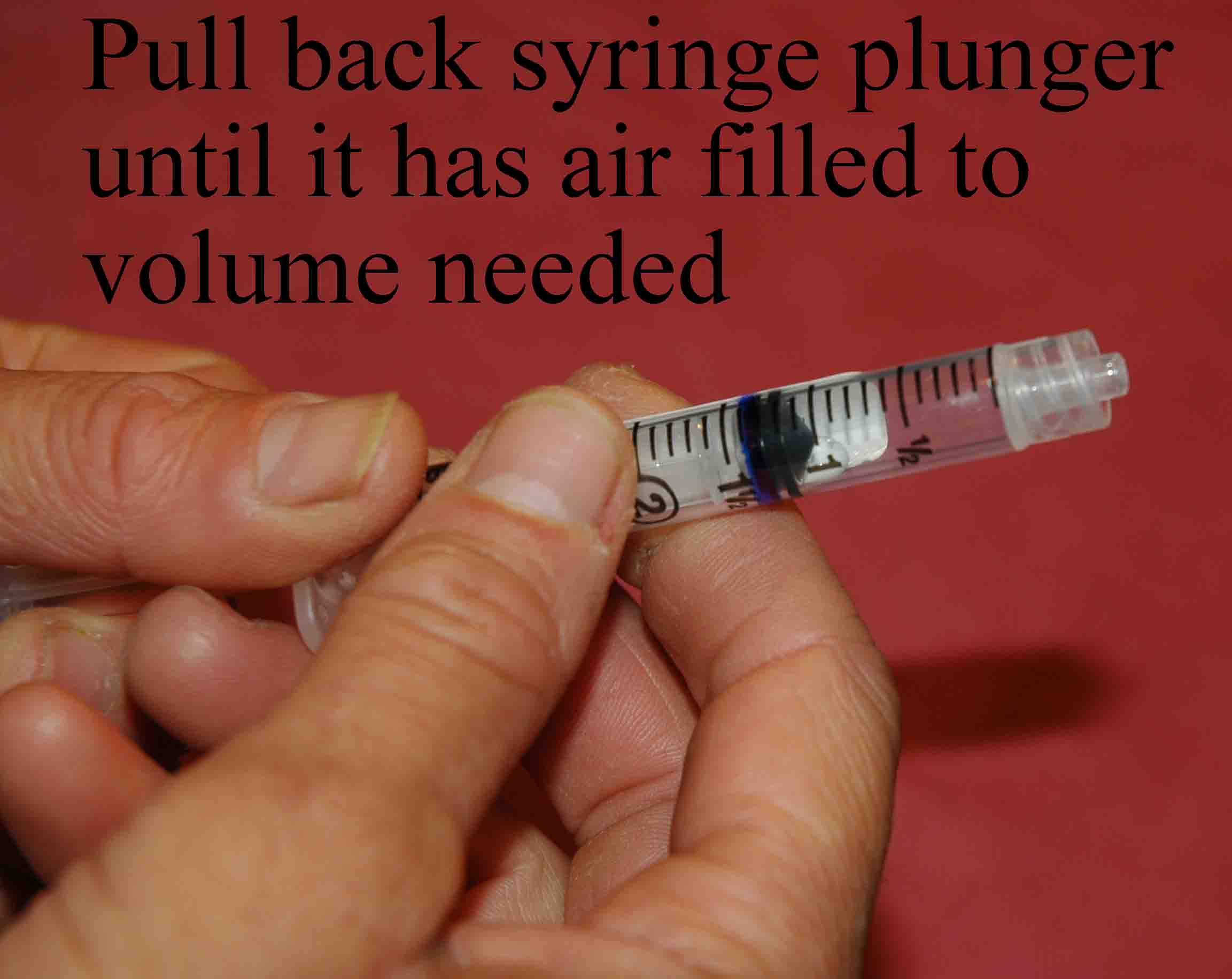
-
For
example if you are supposed to draw up 1.0 ml of medication,
pull the plunger back to the 1 ml mark of the syringe - the
syringe will now have 1 ml of air within it.
-
Pop the
protective plastic cap off the bottle of Versed (midazolam) or
lorazepam.
-
-
Connect the
syringe (twist or slip) to the needle or needleless access device
and puncture the rubber seal of the medication bottle vial.
-
-
Tip the
bottle up-side down so the syringe is on the bottom and the bottle
rubber seal faces down.
-
Compress
the syringe plunger – injecting air into the bottle vial.
-
-
Pull the
plunger back and allow the syringe to fill with medication (look
inside the bottle to see that the tip of the needle is within the
liquid drug, otherwise you will just draw the air back out). Draw up
the proper volume of medication required to treat the patient.
-
-
Twist
off/remove the syringe from the needle/needleless device
-
-
Attach the
atomizer tip via Luer lock mechanism – this product twists into
place.
-
Slip
Luer is also effective as long as the tip is firmly seated on
the syringe tip
-
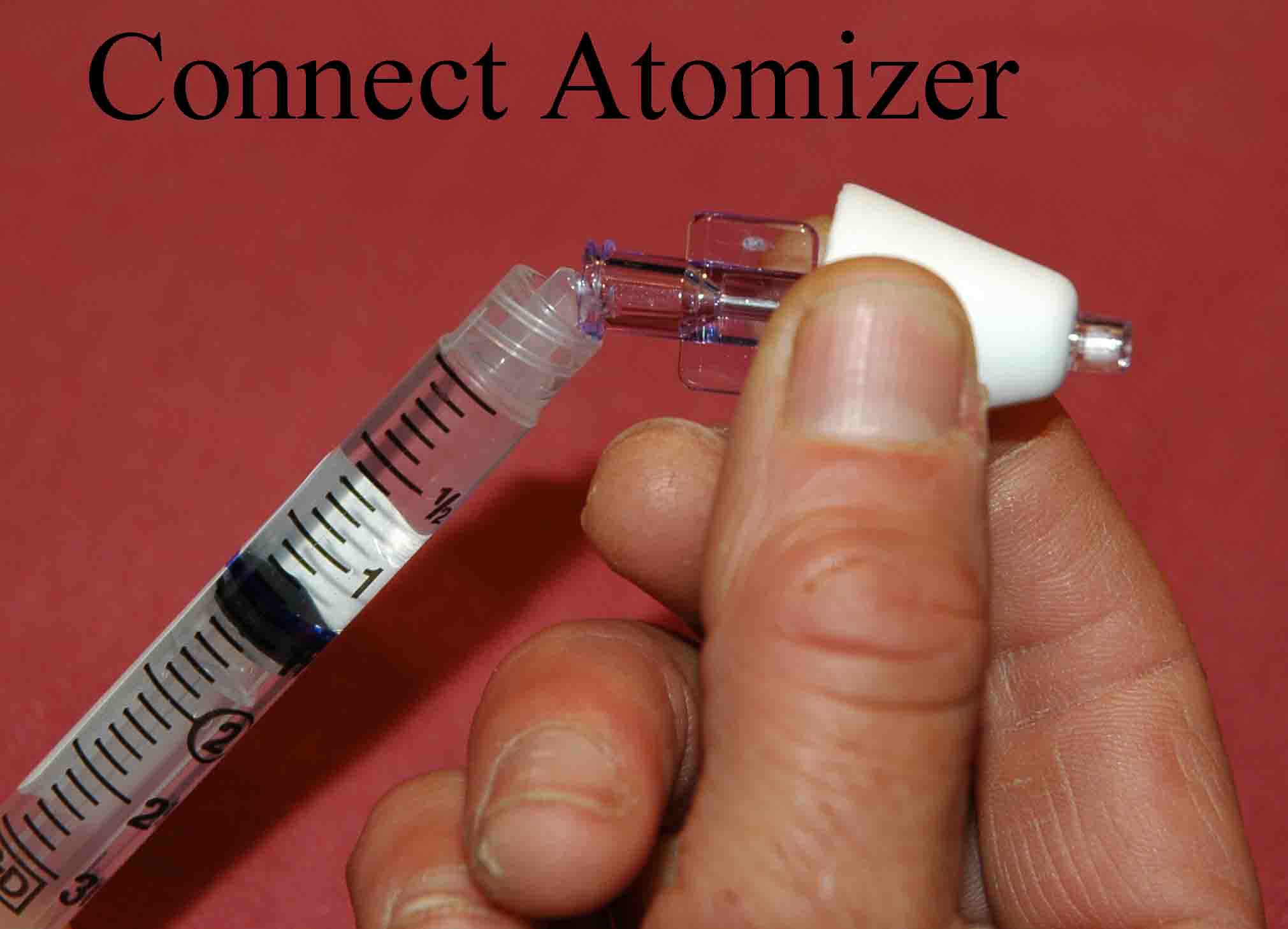
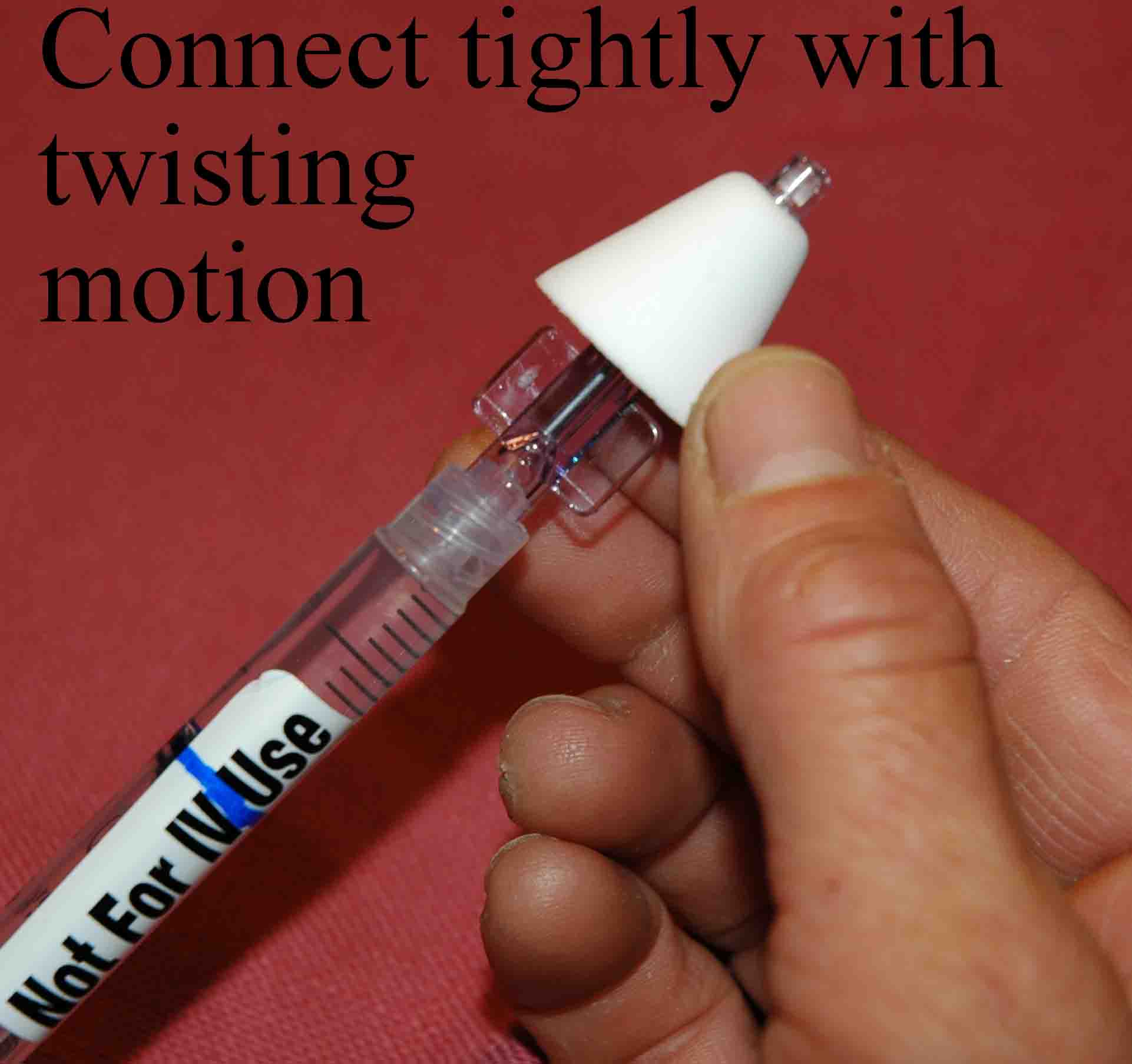
-
Slip
Luer is also effective as long as the tip is firmly seated on
the syringe tip
-
Using your
free hand to hold the crown of the head stable, place the tip of the
atomizer snugly against the nostril aiming slightly up and outward
(towards the top of the ear).
-
-
Briskly
compress the syringe plunger to deliver half of the
medication into the nostril.
-
Move the
device over to the opposite nostril and administer the remaining
medication into that nostril.
-
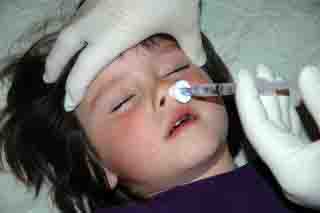 Therapeutic
Intranasal Drug Delivery
Therapeutic
Intranasal Drug Delivery